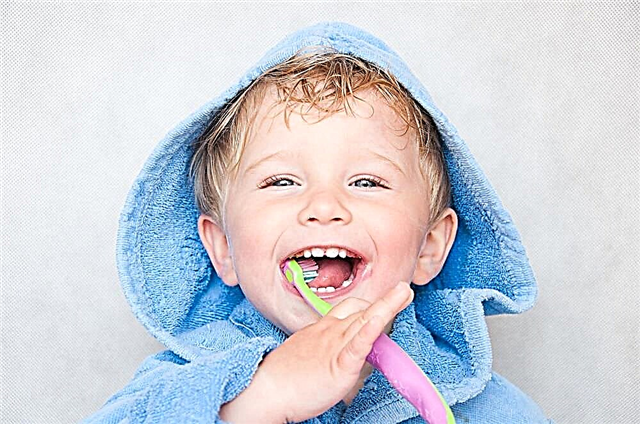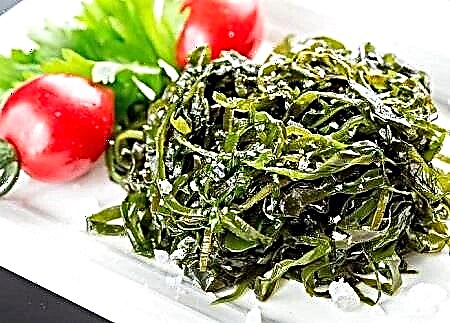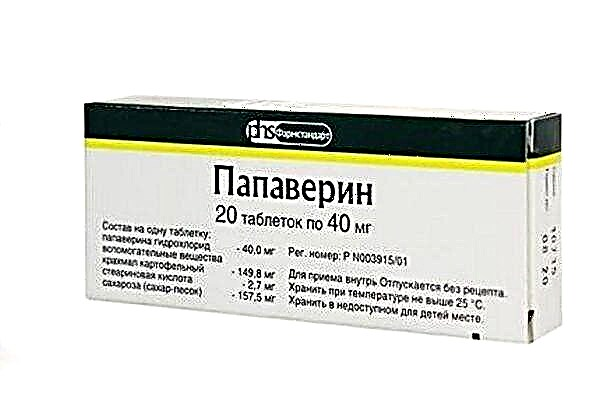
"Dioxidin" has long established itself as an effective antimicrobial agent, which is often prescribed for purulent-infectious processes in adults. However, in pediatrics, due to toxicity, this medicine is used with caution. When a doctor prescribes "Dioxidin" for a child, the mother is interested in how such a drug works on the child's body and when its use is justified. Since the instructions for the medication do not contain information about the treatment of otitis media, rhinitis, bronchitis and many other diseases with this remedy, many parents begin to worry if Dioxidin will harm the little patient. Not everyone knows how to properly bury it in the nose.

Release form
"Dioxidin" is currently available in several forms:
- A solution that can be used externally or injected. It is produced in two concentrations. The drug with a lower concentration (0.5%) can also be injected into a vein. "Dioxidin" in this form is an ampoule with a greenish-yellowish transparent odorless solution. One ampoule contains 5 or 10 ml of medication, and one package contains 5-10 ampoules.
- 5% ointment used only topically. Such a drug is produced in tubes and jars, which contain from 30 to 100 g of a greenish-yellow substance.


Composition
The main component of the drug is called hydroxymethylquinoxaline dioxide. Its 0.5% solution contains 5 mg per 1 milliliter, and the content in 1% drug is 10 mg / ml. The only excipient of this form is sterile water. In 100 g of ointment, the active substance is contained in an amount of 5 g and is supplemented with monoglycerides, nipagin, macrogol and nipazole.

Operating principle
The drug is an antimicrobial bactericidal drug effective against Pseudomonas, Proteus, Klebsiella, Shigella, Staphylococcus, Clostridium and other microbes. The drug interferes with the synthesis of DNA in the cells of such bacteria, which disrupts the formation of nucleotides and the structure of membranes, which leads to the death of microorganisms. The drug is especially effective under anaerobic conditions, as it stimulates the formation of reactive oxygen species.

Indications
In hospitals, "Dioxidin" is especially in demand for infectious purulent diseases. Intravenous injections (0.5% solution) are usually prescribed for purulent meningitis, sepsis and other life-threatening pathologies. but in childhood, injections of the drug are not used, since there is a high risk of overdose and the harmful effect of such a drug on the adrenal glands. Quite a lot of effective antibacterial agents are produced that are allowed for children, even for infants and premature babies.

Local application of the drug is prescribed by dentists, urologists and surgeons. The medicine is administered for purulent pleurisy, pneumonia with abscesses, peritonitis, purulent cystitis or suppuration of the gallbladder. "Dioxidin" is used to wash deep wounds, as well as neglected trophic skin lesions and burns complicated by infection. External treatment with the drug (lotions, compresses) is also prescribed for pustular skin infections.

ENT doctors often prescribe "Dioxidine" in the nose, and ophthalmologists can prescribe such a remedy in the eyes if bacteria have infected the conjunctiva. With angina with such a medicine, gargle is performed, and with purulent otitis media, it drips into the ears.
The reason for dripping the drug into the nasal passages is a prolonged runny nose, which cannot be treated by other means, including antibiotics of other groups. At the same time, it is possible to apply a medication in the nose with a greenish color of the discharge and their unpleasant odor, which indicates the bacterial nature of the disease.
Some mothers still use Dioxidin for children for nasal instillation. For what and why this is done, you can find out in the next view.
Quite often, complex drops are prescribed, which contain "Dioxidin", as well as vasoconstrictor, hormonal and other agents - for example, "Dexamethasone", "Xilen", "Nazivin", "Hydrocortisone". The recipe for such drops is selected individually for each patient. They are used not only for rhinitis, but also for adenoiditis, sinusitis, lingering sinusitis or frontal sinusitis.
With purulent bronchitis, pneumonia or lung abscess, inhalations with "Dioxidin" can be prescribed, which are done with a nebulizer. So the drug gets directly into the infected tissue and affects the pathogens. For such procedures, the medication must be diluted with saline.

At what age is it allowed to take
One of the contraindications noted in the annotation to "Dioxidin" is the age of up to 18 years. In this case, the medicine can be used for children, but only with the appointment of a doctor who will make sure that there are indications for such treatment and determine the required dosage. It is forbidden to drip "Dioxidin" into a child's nose without consulting a pediatrician.

Contraindications
The medicine should not be used in such cases:
- If the child has an individual intolerance.
- If the adrenal function of a small patient is impaired.
In case of impaired renal function, the use of a medication requires medical supervision.
Side effects
Since the drug affects not only the DTC of bacterial cells, but also human cells, it is considered toxic, but such a harmful effect is not observed with local use of the drug, if the dosage prescribed by the doctor is not exceeded. In this case, the treatment with "Dioxidin" of the skin or mucous membrane can cause an allergic reaction in the form of itching or dermatitis.

To avoid this side effect, treatment should be started with a sensitivity test. A small area of the skin is treated with the medicine. If the medication is prescribed in the nose, then 1 drop is injected into each nostril. If after 3-6 hours there are no negative symptoms, then the medication is used in the dose prescribed by the doctor.
Instructions for use and dosage
Injections into the vein of 0.5% "Dioxidine" are done only with serious indications and under the supervision of a specialist. Usually, such a drug is used in case of intolerance or ineffectiveness of cephalosporins, carbapenems and other effective antibiotics. Intravenous administration of the drug is prescribed only by drip, and the medication is injected into the cavity or bronchi using a syringe, drainage or catheter. The dose and mode of such use of "Dioxidine" is determined individually.

In case of purulent wounds or burns, treatment with "Dioxidin" involves the use of tampons soaked in a solution. They are applied to the cleaned wound surfaces and changed regularly. For such treatment, both a 0.5% and 1% solution can be used, but in some cases a more diluted liquid preparation is used. It is diluted with water for injection or saline solution to a concentration of 0.1-0.2%.
If you are going to drip 0.5% "Dioxidin" into the ear or nose, you should clean the nasal cavity or auditory canal from pathological secretions. You can also rinse with saline or seawater. Further, the medication is administered at the dose prescribed by the doctor.
Usually, 2-3 drops of a 0.5% solution are instilled into the nose (1-3 times a day). If any warning signs appear (such as dizziness or itching), treatment should be stopped immediately. The duration of the drug is often 3-5 days. It is not recommended to drip such a remedy for more than 7 days.

Inhalation when coughing with "Dioxidin" requires dilution of 0.5% of the drug with saline in a ratio of 1 to 2, and 1% solution in a ratio of 1 to 4. Take 3-4 ml of diluted medication for one procedure. The child should calmly inhale this medicine through a nebulizer (within 5-10 minutes).
Overdose
A high dose of "Dioxidine" can damage the adrenal glands, causing degenerative changes in the cortex. For this reason, it is very important to control the concentration of the solution and the dosage prescribed for children.

Interaction with other drugs
"Dioxidin" is compatible with many other drugs, including antihistamines, antibiotics, anti-inflammatory hormonal drugs and others. At the same time, it is up to the doctor to decide whether the drugs can be used simultaneously, taking into account the diagnosis and other factors.
Terms of sale
Since the use of the medication has its own characteristics and limitations, it is possible to buy "Dioxidin" at a pharmacy only after presenting a prescription from a doctor. For 10 ampoules of the drug, you need to pay about 340-400 rubles, and the price of a tube with 30 g of ointment is about 320-350 rubles.

Storage features
- The shelf life of the drug in liquid form is 2 years, and the ointment is 3 years.
- The optimum storage temperature for liquid "Dioxidine" is the range from 15 to 25 degrees Celsius.
- Store the ointment at temperatures below +20 degrees.
- If the storage temperature drops below +15, crystals may appear in the solution. Such a drug should be heated in a water bath so that all the precipitate dissolves again, and the medication itself becomes transparent.
- The opened ampoule of "Dioxidine" should be used immediately. If the medicine is applied to the nose, then a new ampoule is opened each time for instillation. This can be avoided by pouring the medication from an open ampoule into a bottle of nasal drops or filling it with a syringe, and then measuring the right amount for one procedure.
Reviews
There are different reviews about the use of "Dioxidin" for children. In many of them, mothers confirm the good effectiveness of this remedy for purulent infections, and also praise the medication for its low cost and widespread availability. In other reviews, parents note the appearance of an allergy to such a remedy or the lack of a therapeutic effect.

There are also negative opinions from mothers who do not risk using "Dioxidin" for a child, fearing its toxic effects. They are supported by many pediatricians (including Dr. Komarovsky), preferring to prescribe antibacterial drugs allowed in childhood, which are now produced by pharmaceutical companies in a wide range.
Analogs
Replacements for "Dioxidin" can be preparations "Dioxisept" and "Dixin", since they contain the same active substance and are produced in the form of a solution used for external treatment and for injections. Instead of "Dioxidin", other antiseptic and antibacterial agents can be used.


It can be replaced with Miramistin, Polydex, Protargol, Chlorophyllipt, Chlorhexidine, Isofra and other medicines prescribed for adenoids, rhinitis, otitis media and other pathologies. Since they contain other active ingredients and can cause side effects, these medicines should not be used without consulting a doctor.



